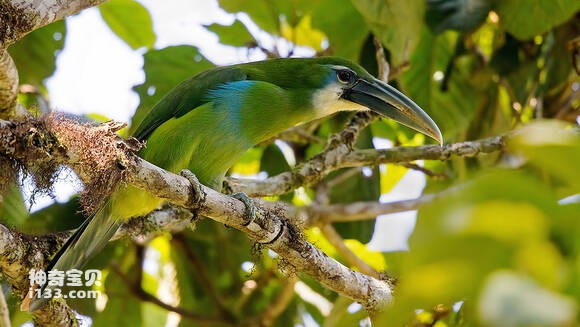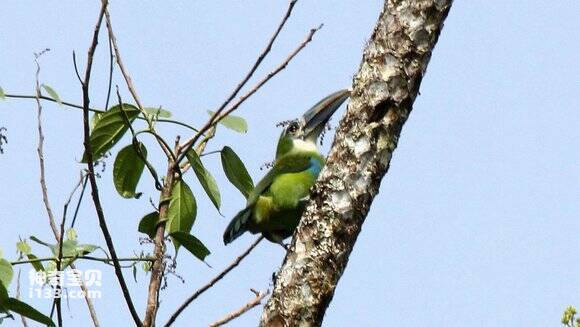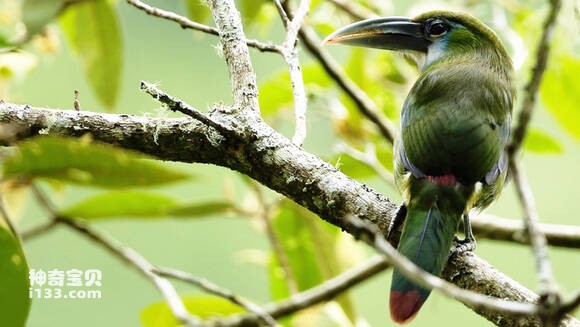Aulacorhynchus coeruleicinctis
IUCN
LCBasic Information
Scientific classification
- name:Aulacorhynchus coeruleicinctis
- Scientific Name:Aulacorhynchus coeruleicinctis,Blue-banded toucanet,Blue-throated toucanet
- Outline:Climbing birds
- Family:
Vital signs
- length:No textual research information is available
- Weight:No textual research information is available
- lifetime:No textual research information is available
Feature
Distribution and Habitat
It is found in South America (Colombia, Venezuela, Guyana, Suriname, Ecuador, Peru, Bolivia, Paraguay, Brazil, Chile, Argentina, Uruguay, and the Malvinas Islands (also known as the Falkland Islands)).
Appearance
The blue-spotted toucan looks slightly like a hornbill, with a large bill but a lighter weight, a serrated beak, yellow on the upper half, slightly greenish, more black on the lower half, and a golden ring on the base. The length of the mouth takes up one-third of the body length. Like a mouth knife. Its body color is very bright, there are three kinds of green, distinct levels: gray green back, green wings, light green belly. Paired with a blue throat, it makes a coordinated and colorful picture.
Despite its large beak, the bluespotted toucan weighs less than 30 grams. The structure of the mouth bone is very special, it is not a dense entity, the outside is a layer of crust, through the middle of extremely fine fibers, porous spongy tissue, filled with air, so that it does not feel heavy pressure.
Details
The scientific name Aulacorhynchus coeruleicinctis, or Blue-banded toucanet or Blue-throated toucanet, is unknown.

Blue-spotted toucans like to live in treetops; It is also the noisiest forest bird, capable of making loud rumbles, trumpets and screeches. When eating, always peck the food with the tip of the mouth first, then tilt the neck, throw the food upward, and then open the big mouth to accurately put the food into the throat, without having to go through the long mouth and spend time in the process of "swallowing". The blue-spotted toucan is omnivorous, feeding on fruits, seeds, and insects,

The blue-spotted toucan nests in tree holes and sometimes preys on the nests of young birds, eating eggs and chicks. - Lay 2 to 4 eggs. Smooth white eggs are piled in unlined holes and hatch in about 16 days. The hatchlings are completely naked, take at least three weeks to open their eyes, and begin to live their lives about 45 days after hatching.

Protect wild animals and eliminate wild meat.
Maintaining ecological balance is everyone's responsibility!








